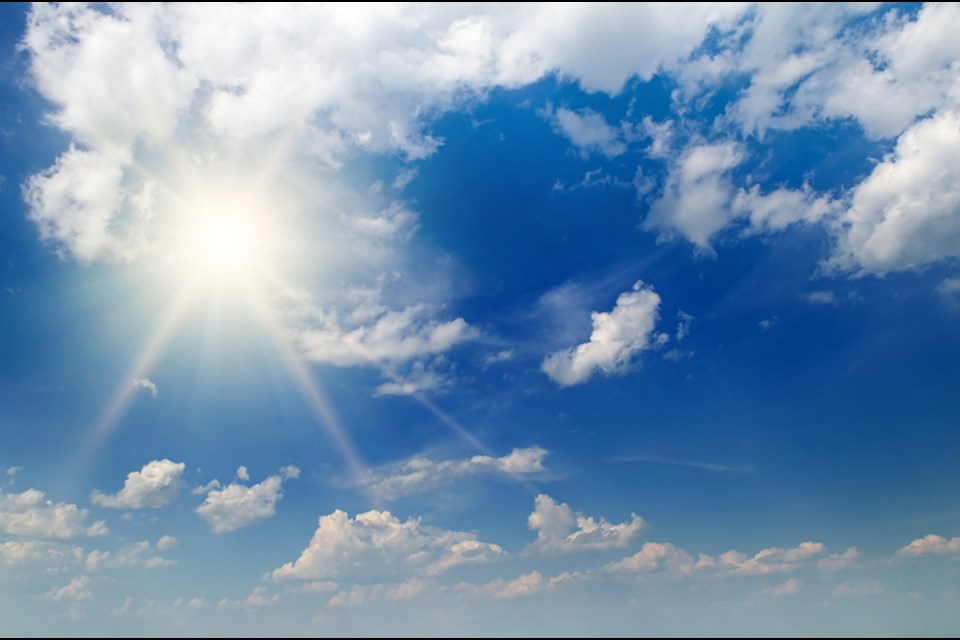Now in early September, if you stand outside at noon and look at your shadow on a sunny day, you will notice that it is about the same length as your height.
As the sun’s arc gets lower on the horizon with each passing day, the UVB light that stimulates vitamin D3 synthesis in your skin is filtered out by the atmosphere. By about mid-September you will stop making D3 completely - no matter how sunny it is. And it’s about this time of year, that like clockwork, everybody starts to get sick.
I have been advising seasonal D3 supplementation for decades, and until I got COVID-19 in Kathmandu in early 2020, I hadn’t been sick since 2008. Back then I had an awful cold I just couldn’t shake. It was one of those unyielding coughs that kept me awake at night, stopping me from getting the rest I needed to get better. Although I was taking oral vitamin D3, out of desperation I decided to visit the tanning salon, and within two sessions over a few days, all of my symptoms resolved.
Likewise in 2020, when I got COVID in Kathmandu, it wasn’t until we finally experienced a night of rain that the skies were temporarily cleared of pollution, allowing me to make vitamin D3 from the sun. I spent the next couple days soaking up the sun’s rays, and by the third day all my symptoms were gone.
Like water, the sun is essential for life, but like water, you can get too much sun. As long as you take care not to burn, the dangers of the sun are often overstated and its benefits underappreciated. Many studies have shown that the most lethal forms of skin cancer (i.e. melanoma) are inversely related to sun exposure, but it is nonetheless true that the sun can damage and promote aging of the skin.
While I do recommend judicious sun exposure in the summer to boost D3 status, rather than relying on tanning salons in the winter, I recommend narrow-band UVB (N-UVB) phototherapy, such as the panel I have in my clinic. This allows folks to synthesize D3 in their skin without risk of skin damage, mostly from UVA light. Narrow-band UVB is also good for psoriasis, vitiligo and some forms of atopic dermatitis.
While I think boosting your vitamin D3 status will hold you in good stead this fall and winter, I do want to mention one particularly useful herb. At the end of August I held a pharmacy workshop, and among the plants we harvested and made medicine from was the bark of the grand fir (Abies grandis), which is fairly common in our area.
In India and Nepal, a very similar fir species called talisa (Abies spectabilis) is considered one of the best remedies for cold, flu and cough, and during the pandemic was studied and recommended for the treatment of COVID. Likewise, the grand fir has a long history of use by Indigenous peoples as a remedy for cough and colds. It has pungent, stimulating properly that clears congestion and stimulates digestion, promoting blood flow and alleviating pain.
The bark in particular is rich in a sticky, resinous sap, and to get this and less of the astringent bark, I harvest the bark from the branches. This also prevents damage to the main trunk, which could kill the tree.
Although it can be used as a simple, I use grand fir along with other native herbs such as cottonwood leaf bud (Populus trichocarpa) and bitter cherry bark (Prunus emarginata) as a cough remedy, taken with honey. For issues like COVID, I combine these with antiviral herbs such as St. John’s Wort (Hypericum perforatum), purple coneflower (Echinacea angustifolia), and elderberry (Sambucus nigra). Of course factors such as diet, exercise and metabolic health are also very important when it comes to fighting off infection.
Todd Caldecott is a medical herbalist and Ayurveda practitioner based in the qathet region, and can be reached through the Dogwood School of Botanical Medicine website (dogwoodbotanical.com) or by email at [email protected].
Join the Peak's email list for the top headlines right in your inbox Monday to Friday.



